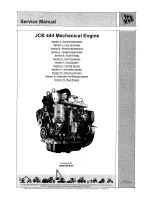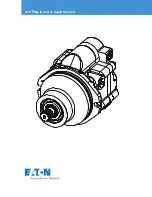
Fault table
13
1.
EDC self-diagnosis
2.
Starter motor turns over engine slowly or not at all
3.
Starter motor turns, engine fails to start, engine fails to start / difficult to start when cold
4.
Engine stalls (dies) during operation, no longer starts (starter motor turns),
engine fails to start / difficult to start when hot
5.
Sudden, temporary engine shutdown, engine does not reach full revs
6.
Engine runs at idle speed only, no throttle response
7.
Engine runs at increased idle speed only, no throttle response
8.
Rated engine speed significantly reduced (even at no load)
9.
Reduced power output in all ranges
10. Irregular engine operation, loss of traction
11. Unstable idle speed, engine surges, misfiring, engine knocking
12. Engine judder
13. Unusual combustion noises
14. Excessive smoke emission: white smoke / blue smoke
15. Excessive smoke emission: black smoke
16. Engine temperature too high (coolant loss)
17. Fuel consumption too high
18. Lubrication oil pressure too low
19. Lube oil pressure too high
20. Lube oil consumption too high
21. Engine too “loud” / mechanical noises
22. Idle speed cannot be adjusted with idle speed operating unit
Possible causes
x x
Battery flat, battery lead connections loose or corroded, break in power circuit
x
Crankshaft drive blocked
x x
Starter solenoid switch sticks (clicks) / damaged, cable connection loose or dam-
aged
x x
Starter motor / starter interlock relay defective (carbon brushes worked loose /
worn, winding damaged, short to ground)
x
x x x
Engine oil viscosity unsuitable, not suitable for ambient temperature, lube oil qual-
ity does not comply with specifications
x
x
Oil level in oil pan too high
x
Oil level in pan too low, oil in oil pan too thin (mixed with condensate or fuel)
x
Engine temperature too high
x
Oil filter clogged
x x
Oil pressure gauge defective
x
Safety valve in the oil circuit defective (does not close, spring fatigued or broken)
x
x
Heavy bearing wear
x
Oil pump gears heavily worn
x
Timing gears worn, tooth flank backlash too great
x
x
x
Engine cold
x
Lube oil entering combustion chamber (piston rings worn, piston rings broken)
−
valve stem guide worn
−
overpressure in crankcase (crankcase breather
clogged)
x
Safety valve in oil circuit defective (does not open), oil lines / oil galleries clogged
x
Leaks in lube oil circuit, particularly at turbocharger and oil cooler
x
x
Piston rings heavily worn, broken
x
x
Piston pins or crankshaft bearings loose
x
Valve stems heavily worn, bent
x
x
x
Valve clearance not correct
x
x
Valves jammed
x x
x
x
Compression deficient, or more than 3
−
4 bar pressure difference between individ-
ual cylinders
x
x
x
Valve seats leaking
o
x
x
Increased power input due to defective secondary loads / consumers such as
hydraulic pumps, fan etc., power take-off engaged
x
x
x
x
x
Air filter fouled or clogged, charge air system leaking, air intake / exhaust lines
clogged / leaking
x x x x
x x
x
x
x
Fuel low pressure system: fuel tank, prefilter, water trap faulty / clogged / mould /
fungal attack, fuel unsuitable / contaminated (paraffin added)
x x x
x x x
x
x
Fuel low pressure system: fuel lines leaking, broken, clogged
Summary of Contents for D 2842 LE 620
Page 1: ......
Page 2: ......
Page 20: ...Engine views D 2842 LE 620 18 7 1 2 4 3 5 6 7 1 2 4 11 9 10 8...
Page 136: ...134...
Page 137: ...135 Service Data...
Page 163: ...161 Special tools...
Page 164: ...Special tools 162 1 2 3 4 5 6 7 8 9 10 11 11 1 11 2 12 12 1 12 2 13 14...
Page 166: ...Special tools 164 15 1 15 2 15 3 15 4 15 5 1 2 7 15 6 3 4 5 6 15 7...
Page 170: ...Special tools 168 3 1 4 29 5 6 2 29 30 31 32 33 34 35...
Page 172: ...Special tools 170 36 37 38 39 42 40 41 44 2 44 1 44 43 1 43 2 43 3 43 45 46...
Page 178: ...176...
Page 179: ......
Page 180: ......
















































